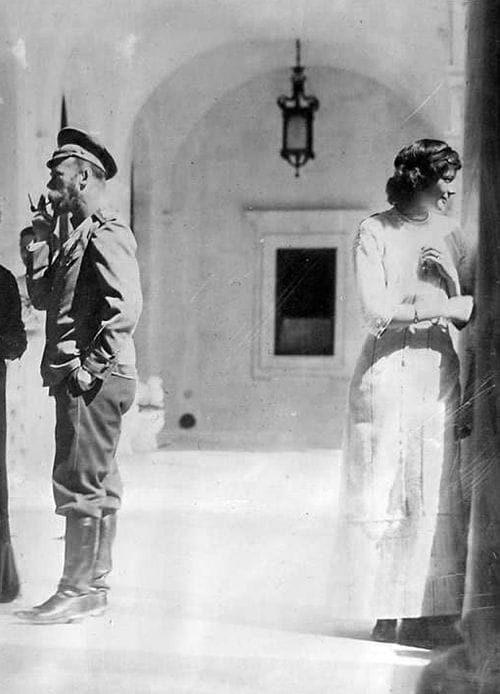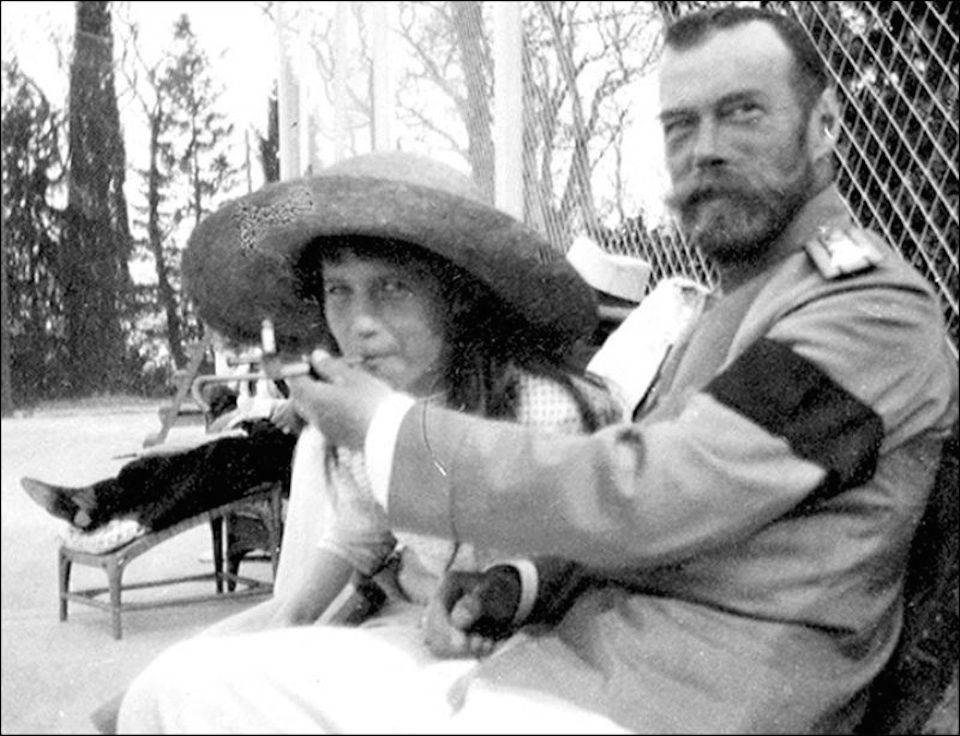Conflict in Ukraine and an ideology prêt-a-porter.
Gen. Augusto Pinochet gave classes of geography and geopolitics at the War Academy of Chile. As the conflict in Ukraine edges towards civil war, many in the West and in the East are reminding us how important is to learn the unfathomable lessons of geopolitics.
“He who controls Eastern Europe Controls the heartland; he who controls the heartland controls the world island and, therefore, the world.” This is how in 1904 Halford Mackinder described the ‘geographical pivot of history’. Himself one of the founders of the London School of Economics, between 1919 and 1920 Mackinder served as High Commissioner for Southern Russia, where he sought to unite counter-revolutionary forces. Eventually he came to the conclusion that interposing buffer states between the Bolsheviks and Europe was the best solution. Meanwhile his ideas about the salience of the ‘heartland’ travelled to Germany, where they captured the interest of the Nazi regime.
Looking at a place loaded with history search as the Crimea, more than one observer of today’s tensions has fallen into the temptation of using metaphors that are imbued with geopolitical reverberations, such as Anschluss, containment, spheres of influence. The revival of geopolitics is nothing new. Those uncaptive minds whose incessant dissent undermined the Cold War order thought that the crumbling of the Berlin Wall would clear the ground from the strictures of geopolitics: exposed to the course of post-Communist politics several among them soon came to a bitter realization about the resilience of mechanisms of geopolitical ‘othering’. The European Union itself, which has been entirely built against the geopolitical hypothesis, has to come to terms with its persistence.
In brief, geopolitics is back. Some will say it never left us. And that the liberal decade – i.e., the 1990s – was nothing but a confused and confusing interlude, a sort of belle époque nurtured by globalization, an era upon which the post-9/11 ‘war on terror’ and the financial crisis that flared up in the US (and was later transferred into the EU), had already closed the curtain. Others would contend that the ending is not decided yet, and the return of geopolitics may in fact reveal itself to be something else, for which embalmers and zombies have been called back to the stage.

Be that as it may, a revival of geopolitics has been going on for quite some time in post-Communist Russia, after a long period during which it was banned as ‘wrong ideology’. An advocate of the traditionalist vision that is close to fascism, Aleksandar Dugin, is author of ‘Foundations of geopolitics’, a text that can count some admirers at the Kremlin. As the Ukrainian crisis turned violent Dugin specified that the Crimea would be only the first step, that Nova Rossiya was rising from its own ashes, and offered a pact to the nationalist Ukrainian brethren that had catapulted themselves to power in Kyiv, flocking to be enrolled in the new National Guard, whose salary is likely to be paid thanks to external budget aid.
In a similar way, as Stefano Guzzini reconstructs in his edited volume The Return of Geopolitics in Europe? Social Mechanisms and Foreign Policy Identity Crises (Cambridge UP 2012), to a closer scrutiny the 1990s in the West are the decade during which Samuel Huntington writes the ‘Clash of Civilization’, which became an airport bestseller as civil wars in Bosnia and Chechnya dampened the euphoria for the fall of the Iron Curtain. Huntington’s scheme, which is both theoretically parsimonious and methodologically flawed, describes the Ukraine as a ‘cleft country’, a giant that is dangerously divided by civilizational fault lines. A constellation of bloody vicious wars swept the fragmented peripheries of Europe as the latter decided to pursue a strategy of political integration.
Once the enemy had disappeared, those elites that in each country deal with foreign policy found themselves without a compass, and instinctively went to look for some ‘non-ideological anchoring’ for the way they understood international politics. Anxiety about political identity in an open space surrounded by conflicts and crossed by globalization flows meant a return to the traditional fundamentals of realism and national foreign policy. With one eye on gas and oil pipelines and the other on analogies that mobilize collective memories, experts of geopolitics started mushrooming in an intellectual climate that often resembled a cut-and-paste from the crisis of the Versailles Treaty: emphasis on the timelessness of national identities and minority issues was to be found everywhere. Par contre, it was clear that the analysis of politics did not pay much, in terms of catching the interest of the public: very few analysts sought, for example, to understand what type of political deals among elites allowed to the fragile Russia run by Boris Yeltsin to survive across the big crisis of the 1990s. A digitally remastered geographic map would lend itself better to communicate presumably neutral and non-ideological thesis.
Geography has never been an innocent discipline, enmeshed as it is with conflict among authorities about who has the power to occupy, organize and administer space. Born when Great Powers’ territorial expansion had stretched to its geographical limits, and their collision with one another was already under preparation, geopolitics typically offers explanatory models for the success of foreign policy, and prescribes lines of strategic conduct that will have influence on the history of the XX century. As the critical geopolitics school has shown, framing an issue geopolitically means venturing into a precise political discourse about the designation of danger and threat. In other words, there exists a veritable way of thinking geopolitically. Even if Mackinder phrase-book about world islands, heartland and pivots today sounds obsolete, the fact remains that models of global politics, to a greater or lesser extent, are led by some form of geographical understanding.
Both classical geopolitics and its new forms (which Guzzini calls neoclassical) propose an arsenal of conceptual tools that are typically and implicitly offered as objective, material and simple ways of anchoring national interests and national security. Needless to say, geography and political identities are assumed to have their own essence: the classical and neoclassical geopolitical approach stays clear of dangerous ideas about the nation as a construct or a permanent negotiation affected by changing opportunities.
When Mackinder theorized the strategic salience of the continental landmass that corresponds to today’s Ukraine, he was well aware of how technology was upsetting the strategic value of sea/land control. He had experience of railways and telegraph, but presumably he had little familiarity with airplanes, and he could have no understanding of the flows of the transplanetary economy. Today, once Adam Przeworsky exhorted to forget about geography and focus instead on political processes, it becomes difficult to claim that ‘Eastern Europe’ exists as an object in itself that is different from what lies East of the Oder river. Ontologically speaking – but also epistemologically and methodologically – the existence of experts of Eastern European geopolitics sounds even more suspicious.
Geopolitical essentialism leads pro-Ukrainians and pro-Russians to overlap Vladimir Putin, a self-styled conservative who treads a line between sovereignism and national-imperialism, with statues of Vladimir Lenin. Among (too many) other things at Brest Litovsk the latter gave away large part of the Ukrainian territory so as to drive revolutionary Russia out of the carnage of the Great War. Geopolitical amateurs fail to see the way in which Putin on Crimea made choices under the sway of the ultra-conservative autocratic Tsar Nicholas. And, to add a grotesque note, we now observe federal (or hybrid) polities such as the US, the EU and Germany intent on ruling out federative solutions for the Ukraine: federations can be a solution only in the West, it seems, while the East is fit for big nation-states (and various reincarnations of corrupted Oriental despotism).
The geopolitics system coordinates are shared: after reading for years about the willingness of the unfathomable ‘International Community’, now are back to reading about what ‘the West’ wants or fails to do. By clinging to the self-evidence of history and geography, the geopolitical discourse loads political realism with deterministic emphasis. It aims to orient the gaze of realism towards choices that are presented as needed ‘given to the severity of the moment and the interests around the table’. It eternally alerts policy makers about the ominous consequences that neglecting some very hypothetical factors could have, thereby converting risk into threat – and volunteering to act as the militarizing wing of realism: the intellectual platoon that raises the problem of controlling territories, of unilateral acts made preventively, resolutely and discretely, so that negotiations can be opened only on the basis of accomplished facts. In a similar context there will always be room for paramilitary nazi-onalist groups that do what they have always done: they stage provocations, and they kill to instigate fear, deepen divisions, set fire to cosmopolitan cities that have long refused to burn. The recent massacre in Odessa is a case in point: one that gives to the zombies of geopolitics the delight of self-fulfilling prophecies, instead of the challenge of stopping the escalation.
Acknowledgements
Picture: Tsar Nicholas II in Mogilyov, allowing his 15-year-old daughter Anastasia to smoke. An Italian-language version of this commentary was published in the daily ‘Pagina 99’.
